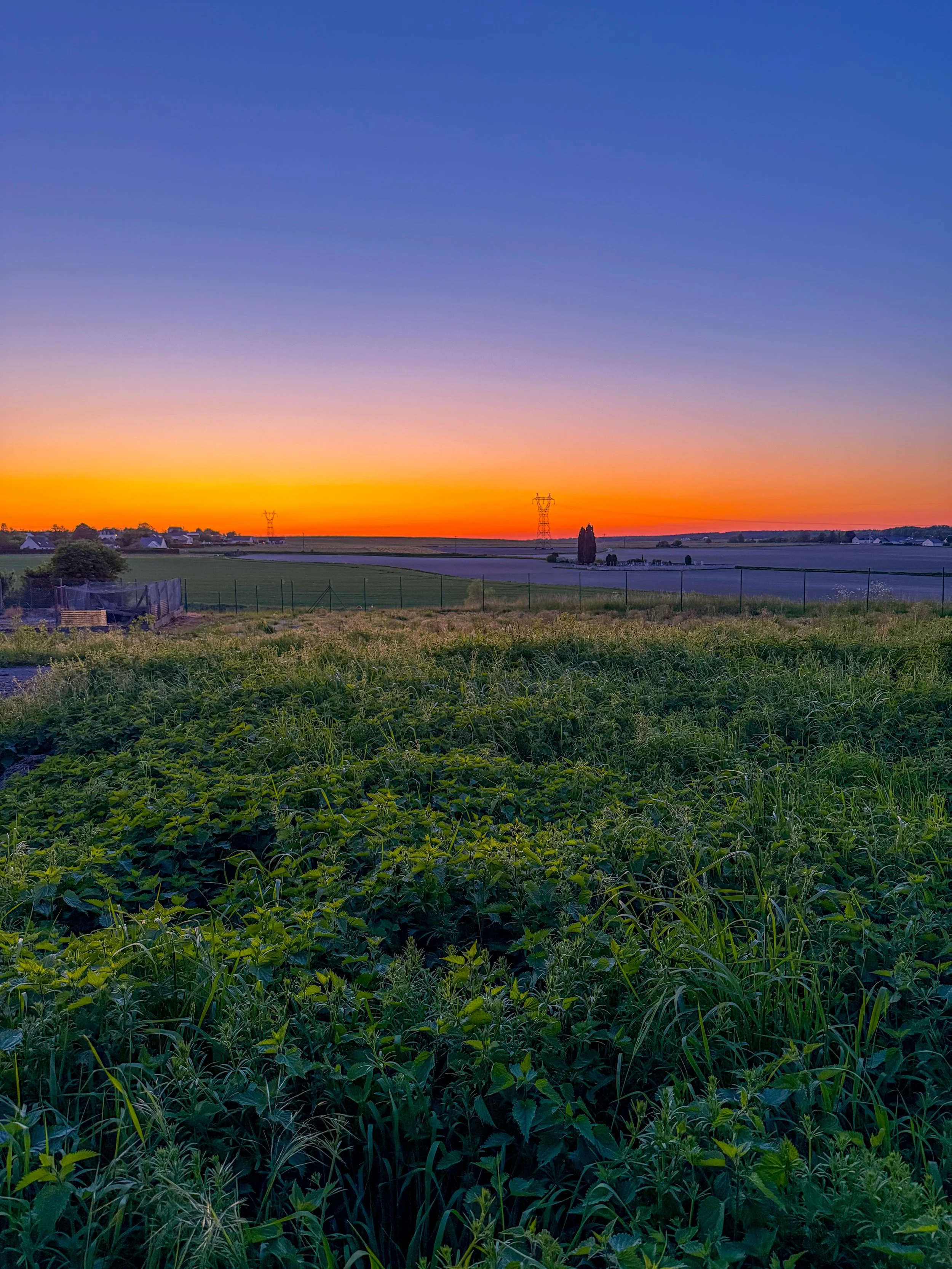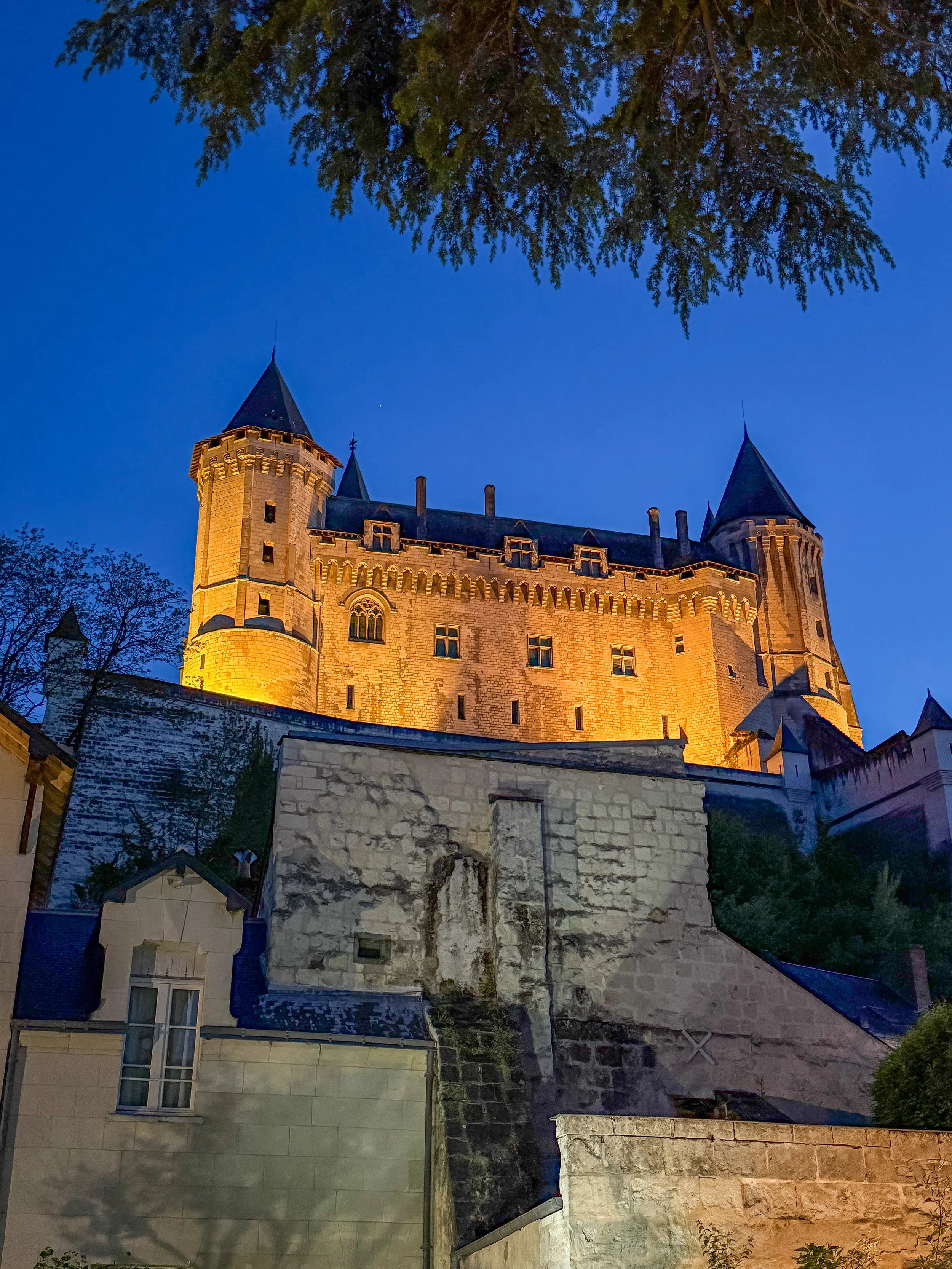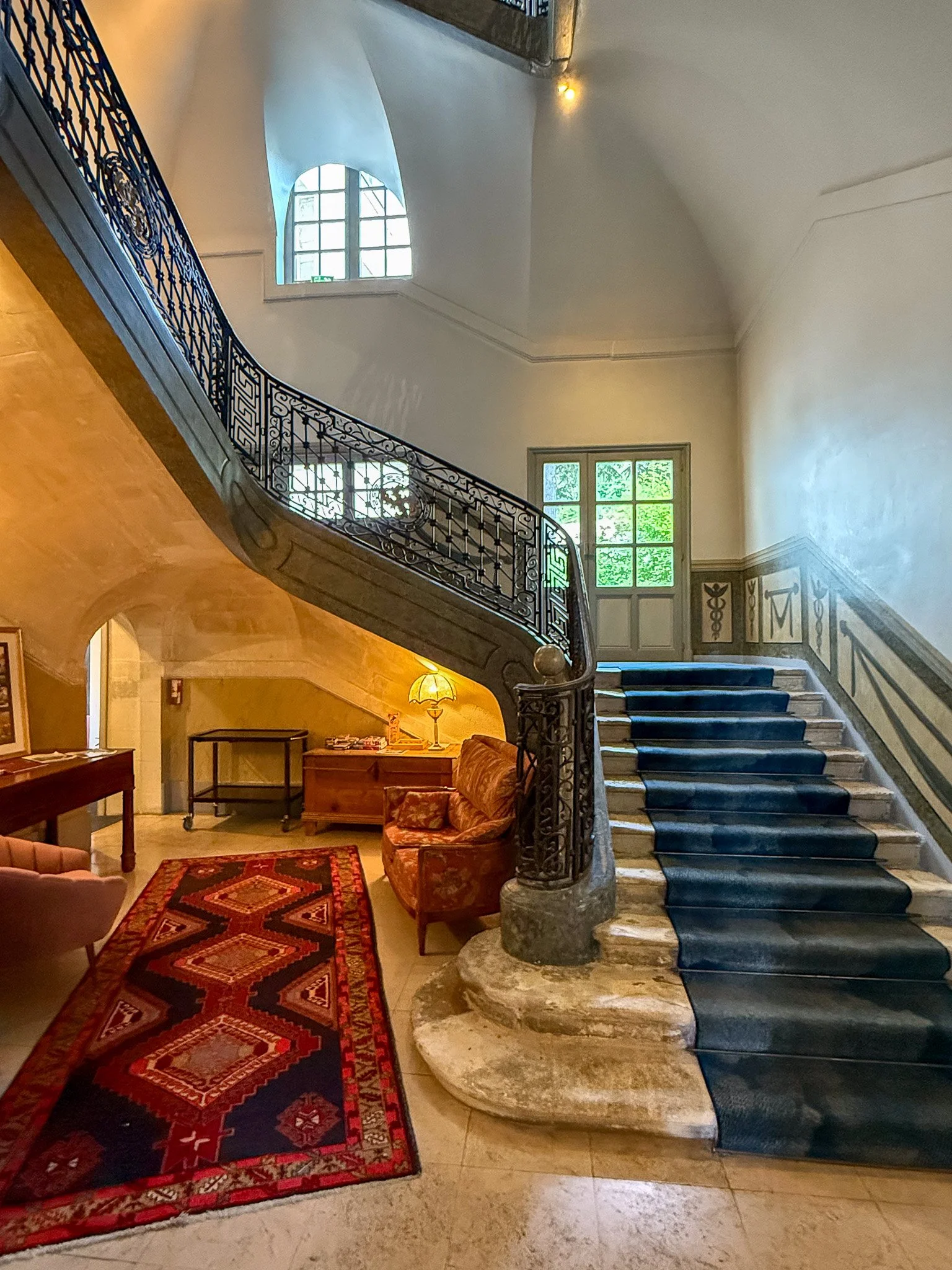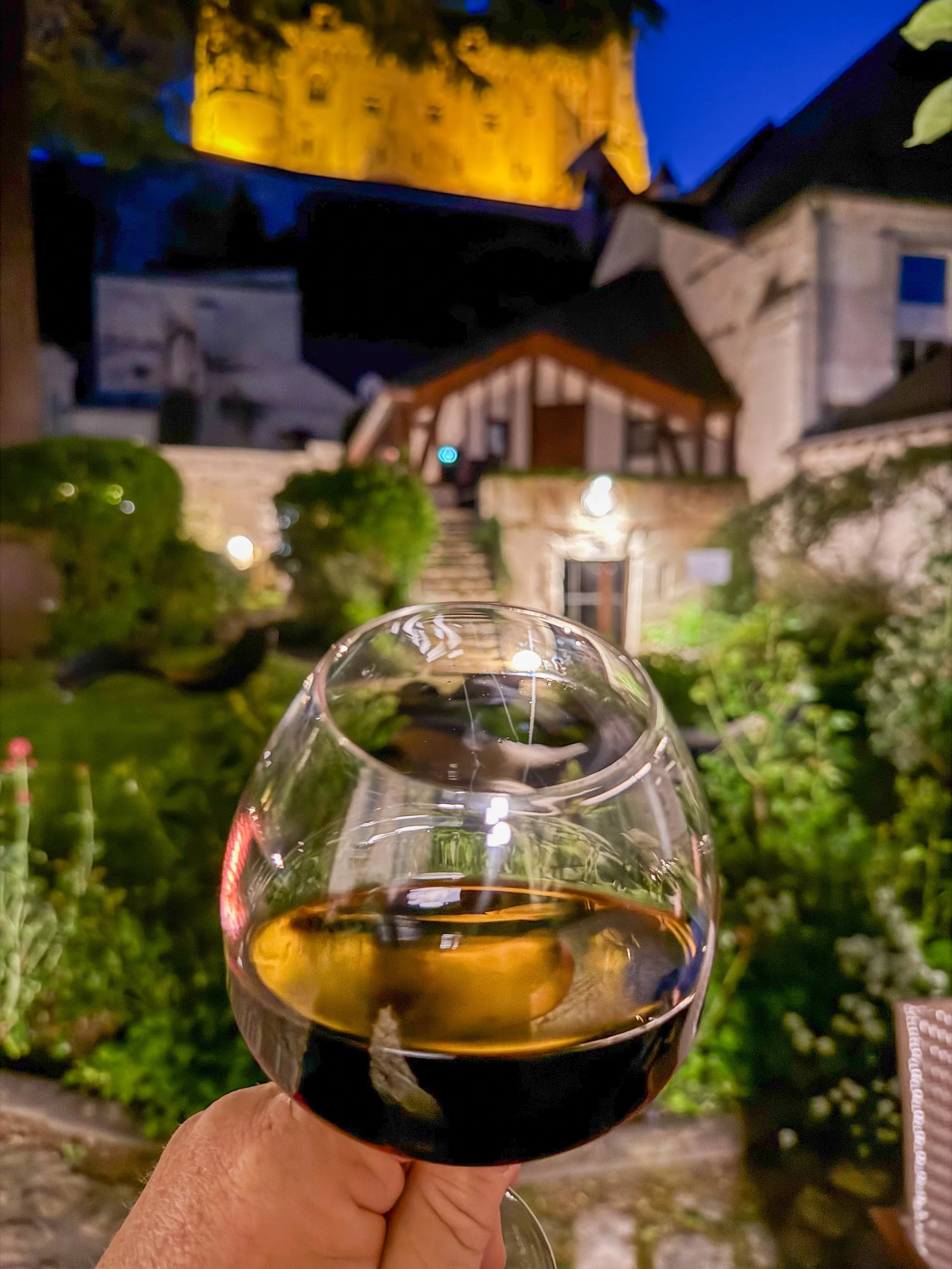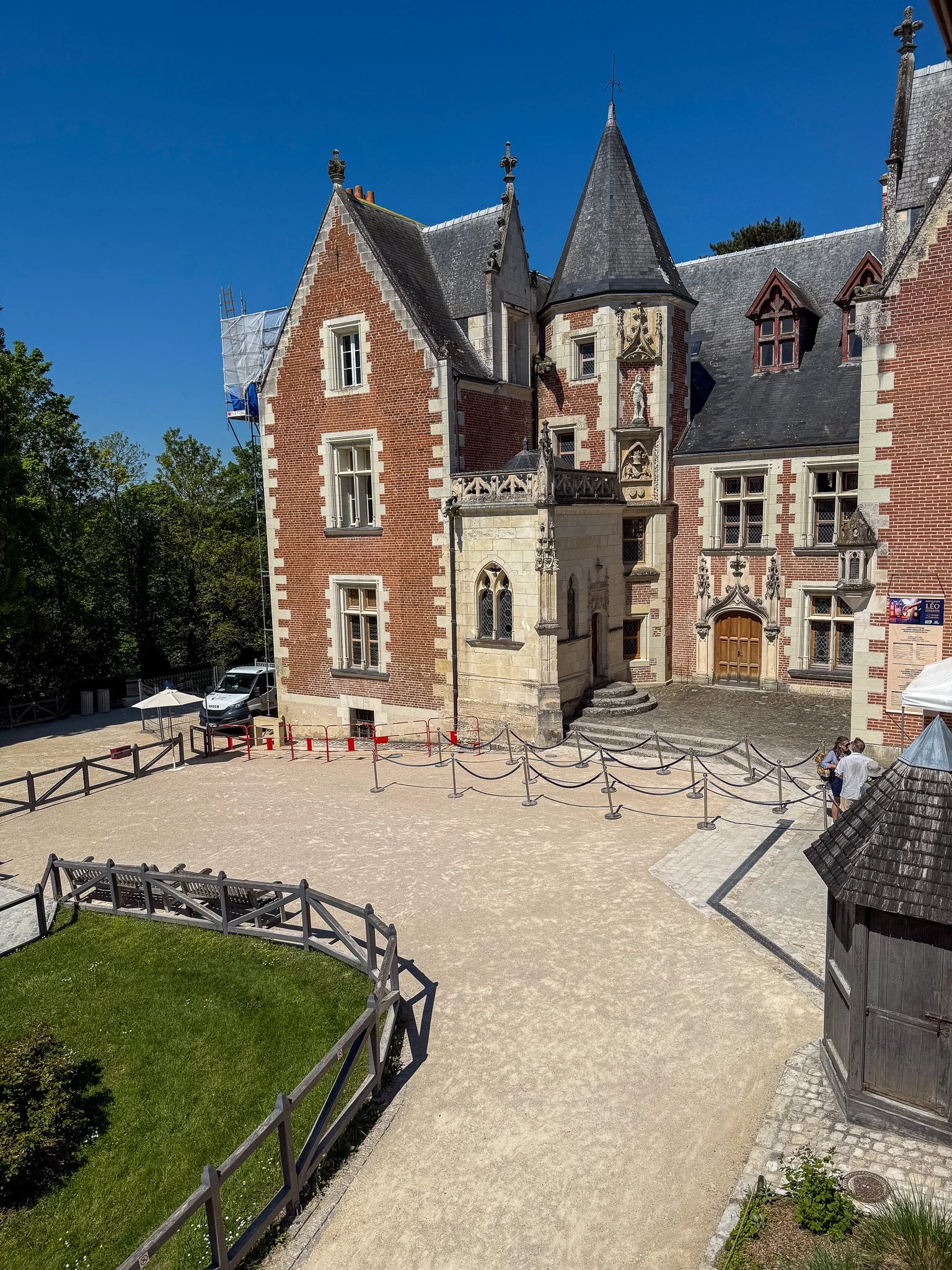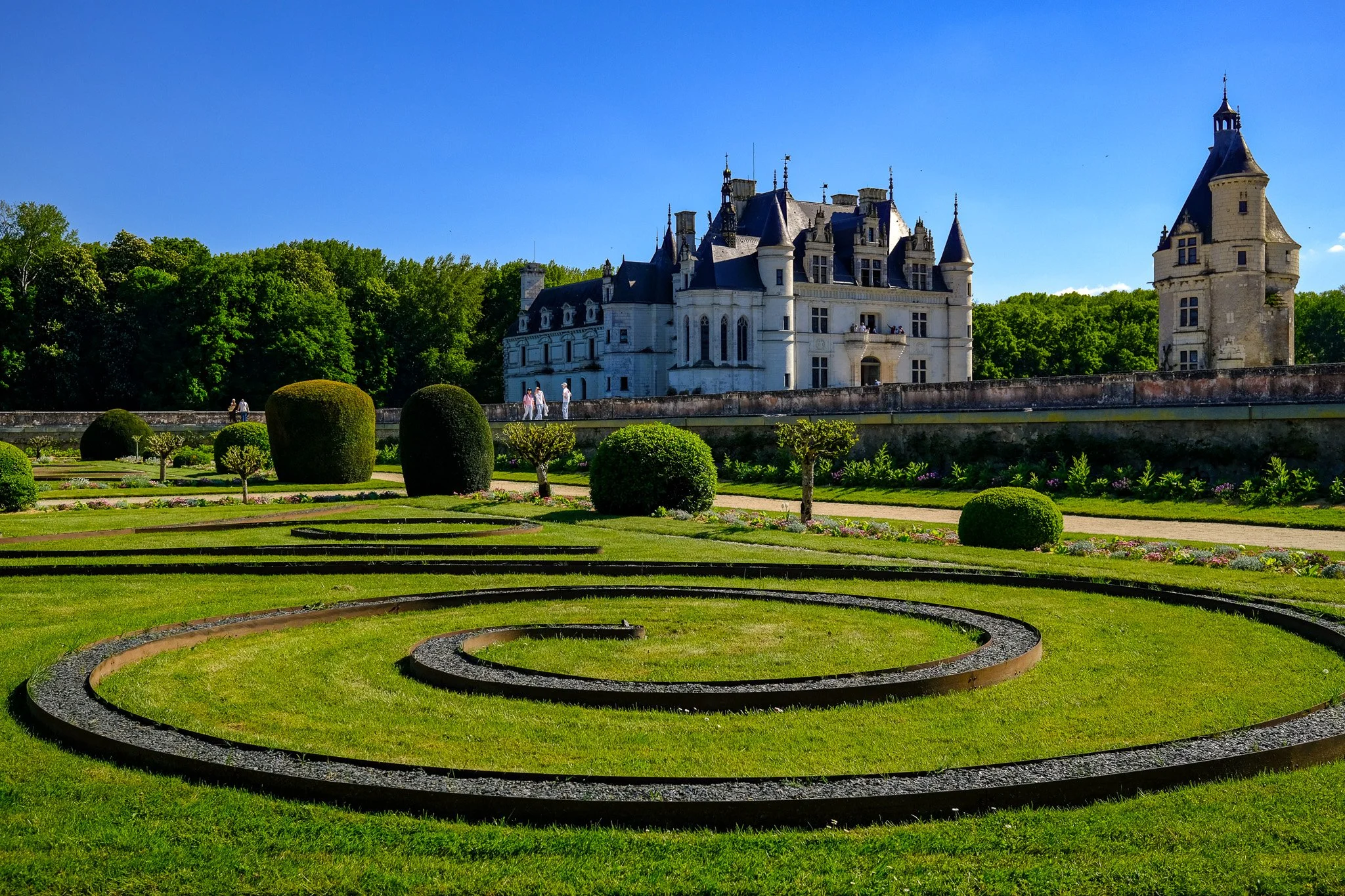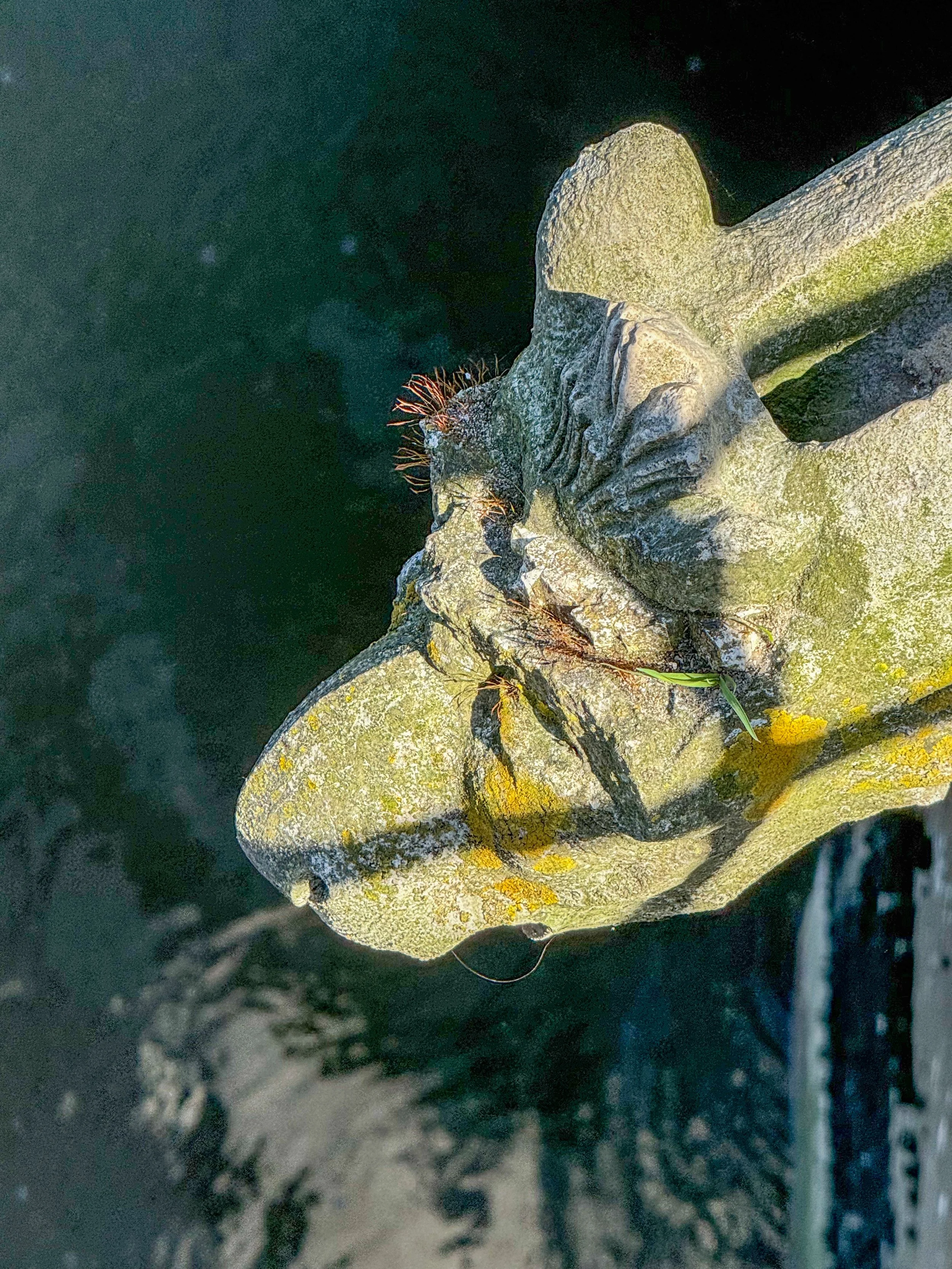Road trip to Normandy, Brittany, and the Loire Valley: Part 3
Sunset over the lush Loire Valley in France
And so now it was time to leave the salt air and the gray sea and head for warmer climes. The gentle and wide Loire River meandering its way from the center of France out to the Atlantic with its many tributaries: the rivers Maine, Nièvre and the Erdre on its right bank, and the rivers Allier, Cher, Indre, Vienne, and the Sèvre Nantaise on the left bank. We would only see the Cher and the Vienne on this trip, but that was fine with us. This is where the central wine regions of Chinon, Savennières, Bourgueil, and Saumur Champigny were, and for me personally, the entire reason to make the journey.
I think all of us had their own reasons for coming to this part of France, however. Marie was revisiting a place she had biked through in her youth and remembering the people and places that shaped her life. She also wanted to visit the final home and working studio of Leonardo Di Vinci. Did you know that the famous polymath, a genius who was a master painter, draughtsman, engineer, scientist, theorist, sculptor, and architect, was invited by the king to live in France in the final years of his life when he had worn out his welcome in Italy? This is why the Mona Lisa is at the Louvre, because he brought it with him and when he died it passed to the French as “payment” for their hospitality. At least this is what the French tell the Italians when they ask for it to be returned.
There are also many castles in this part of the Loire Valley. The well-to-do and aristocracy of the medieval period would leave Paris during times of widespread sickness or the sweltering heat and decamp to these incredible “homes” between Chinon, Tours, and Amboise. In the 21st century they are huge tourist attractions, and we weren’t going to miss them—at least a couple of them—while we were there.
When we finally made it back to the parked car at Mont Saint-Michel on the Atlantic we had just walked a mile plus from the abbey in the heat, this after the endless stairs of the fortress itself, and now we faced a three-hour drive southeast through the French countryside to the city of Saumur. I am making it sound daunting, when it wasn’t at all. It was stunningly beautiful, green, lush, with so many cows. And you know what cows mean. Milk. And you know what milk means. Cheese. Funny how that works. In Texas when I pass cows while driving, I think of steaks. In France, I think of long lit up cases of hundreds of stinky and delicious cheeses with wrinkled skins or rotting mold. Mooo.
My main job on this trip was to find us places to eat, which although a huge burden (poor me), I will admit that I am especially gifted at. I’d like to think I batted 1.000 finding restaurants over the ten days we traveled together, but the truth is I hit a couple of weak grounders. Still, I am proud of my well-above .750 BA. Our first night in Saumur was sadly one of my weak dribbles when we went to a mediocre Italian restaurant just a short walk from our beautiful hotel. They treated us well and even produced a Brunello di Montalcino wine that wasn’t on their list that the maître d’ told us he held for special guests. It was only meh, improperly stored, I think. Unfortunately, their exceptional hospitality, which we truly appreciated, couldn’t make their food taste any better. I sound spoiled and truth be told, we were on this trip. We ate at so many exceptional places and drank so many great wines. I do know how to find them.
The Château de Saumur hovers above our hotel in Saumur
We stayed at the Hôtel Anne D’Anjou in Saumur, a fabulous building facing the Loire River. It was built as a luxury home in the 1700s, used by the Nazis during WWII, then served as an apartment house in the 1970s, until it was purchased and beautifully refurbished into a four-star hotel in 2019. The hotel had an impressive central staircase, it’s rising walls covered in art. There was a beautiful dining room where we ate an impressive breakfast every morning. Yogurts with fruit, fresh pastries, breads, scrambled eggs and bacon, cereal, Spanish oranges to make fresh squeezed juice, a hot water bath for soft-boiled eggs (which I became very smitten with but have yet to achieve the yolks of perfection here at home that I did with that device), apple and pineapple juices, a huge coffee machine for cappuccinos and double espressos. Breakfast alone was worth the stay. There were sitting rooms with fireplaces off the main lobby. To the rear of the property was an intimate courtyard patio area with comfortable tables and chairs and mature gardens to enjoy in the mornings and evenings, all set under the omnipresent Château de Saumur, a 10th century castle, which hovered hundreds of feet above us on a stone edifice.
The main staircase at the Hôtel Anne D’Anjou in Saumur, France
Wine each evening in the hotel courtyard while in the Loire Valley
The hotel also featured a small bar, a swimming pool, a sauna, and best yet, massage service, which Marie and I both took advantage of one afternoon. Their one-size-fits-all bathrobes did not fit all, let me tell you, and I looked ridiculous trying to hold it closed over my gut, but it was just in the way anyhow. The French masseuse was a smallish woman who had zero trouble dispatching me with her forearms and elbows. I was dizzy and groggy for an hour afterward and my back muscles were sore the next day, but I loved every second of it.
Our hotel rooms were massive, which was a very welcome change after the typically tiny rooms in Paris, Bayeux, and Dinan. Our beds were so big that I needed to text Chien-hui whenever I needed to speak to her. “Over here!” As much as we all loved this hotel, and we resisted leaving it on our last morning with the greatest decorum, only muffled tears, we did have to get out each day and see the vineyards and castles.
Our first destination was Le Château du Clos Lucé, the aforementioned home of Leonardo, a short drive from Saumur along the Loire River to Amboise. By our modern standards, the house was a palatial mansion, but we would learn after visiting other castles in the area that Leonardo’s final home was only a mere shack. The self-tour was wonderful as we passed through private rooms, saw the furniture, kitchen, and most impressively, the desk and chair where Leonardo himself sat and let his mind generate the ideas that would come to life one day: helicopters, tanks, artillery, moving bridges, and the automobile. They had very impressive 3D video displays bringing his ideas to life, as well as good-sized scale models. In the gardens they displayed full size replicas of the ideas he had only put to paper. They made for captivating sculptures. The restaurant in the garden bustled with guests and servers as everyone enjoyed their aperos in the perfect weather that day.
Le Château du Clos Lucé in Amboise, Leonardo di Vinci’s final home
Leonardo di Vinci’s bed
The studio where Leonardo di Vinci worked in the last years of his life
Me and Leo
The house is located in an otherwise completely normal neighborhood. I imagine the gossip, “Why yes, my neighbor is Leonardo di Vinci, and he is an insufferable egomaniac. Just yesterday I saw him flying around his backyard as if unbound by the laws of gravity like the rest of us.”
Just outside the front doors of the Clos Lucé there was a small café run by a husband and wife where we stopped for the plat du jour of lamb and Mediterranean vegetables and a glass of white wine. Here, I improved my batting average again as this was Mom & Pop cooking in France, at its finest. We dined under umbrellas on their small deck looking back onto the château, enjoying the sun and gentle breeze, imagining what it might have been like to live there 400 years ago when the roads were dirt, and the cows, sheep, and swine roamed freely. The roosters crowed, and the chickens gave the freshest eggs each morning. Sure, people died of the common cold, most never living past the age of 40. They had no idea that a genius lived among them and that the painting that millions of people would line up to see each year in the future was sitting in a dusty corner on the other side of that big wall.
As important as that was, Mark and I were finally unnerved by the amount of bird shit that had covered our car that we decided to stop and remove it. We had parked under a huge pine tree the night before at the hotel parking lot and I don’t know what kind of ninja birds were in that tree, but they produced the stickiest, near permanent, high-volume excrement we had ever seen. Plus we had splatted enough bugs that we couldn’t see out of the windscreen any longer. After the visit to Leonardo’s house, on our way out of Amboise, we saw a car wash and gas station, so we pulled over to fill the tank and rid ourselves of these eyesores. After messing with the machine to get the soap and sprayers to work—the simplest things are always such a challenge in France for us Americans—the sprayer burst with life rattling its housing. We wrestled it from its sheath with both hands and began a feeble attempt to get the shit off the car. No luck whatsoever. Looks of surprise all around. Next, the soapy brush was tried to no effect. Finally, we resorted to the water-laser-pressure-washer setting that probably could have cut concrete but would only work on the problem at hand if we held the nozzle at an angle about an inch away from its target. We could only hope the paint wouldn’t be damaged. We tag-teamed the car, Mark spraying, me employing the soapy brush once he finally loosened it some, Chien switching the knobs back and forth and feeding the machine with money to keep it all going.
When the machine ran out of funding and fell silent, we felt as though we had just been through something significant in our lives. Mark put the car in drive and as we left the bay the windshield wipers swayed back and forth. Mark turned them off. They continued. Mark parked in the lot fumbling with the tree on the column. Up, down. Rotate. Pull in, push out. He turned off the car. They persisted. Oh, Jesus. We all made our back seat suggestions to Mark because, you know, he’s a 60-year-old man who has driven for 45 years but is clearly too stupid to handle windshield wipers. Eventually, not knowing what else to do, I pulled out my phone and brought up YouTube. Apparently, it was a known thing on this model of Peugeot. The diagnosis wasn’t good according to internet experts and we were going to have to replace something—a fuse, a motor, a sensor—on this rental if we wanted the wipers to stop anytime soon. Well, F that. We had castles to see.
So, we headed south through the Touraine countryside, the wipers squeaking on the dry glass for 30 miles, we were helpless against them, until we reached the Cher River and what is probably the most famous castle in the Loire Valley, the Château de Chenonceau. If you’re not sure which castle this is, think of the white one that hovers above the river and has seven arches allowing the swift moving river to pass underneath it. We came into the property down a long road, passing their own private vineyards, until we reached a massive parking lot, nearly the size of a shopping mall. We backed into a space at an angle and finally gave our ears a rest. While on the drive there, I had found which fuse needed to be pulled at least, if not replaced, to kill the wipers altogether, so we popped the hood. There we all were staring into the abyss of the engine compartment. After we opened the fuse box, the colored grid looked nothing like the schematic I had found for our model car. Of course it didn’t, it’s France. Just then, two security guys pulled up in a golf cart.
These guys didn’t speak any English, but Marie and I could speak enough French to explain the issue and rightfully blame the industrial grade bird shit as the root cause, which made them chuckle. The older of the two pulled out his phone and found the exact same schematic I had. He scratched his head when it didn’t match. The younger guy got into the driver’s seat. He fumbled with a box of some kind under the steering column where another fuse box was supposed to be, but wasn’t. After doing a lot of experimenting with the buttons and switches, which amounted to doing exactly nothing, we tried turning the car back on again. The wipers swiped left once and settled into their normal position at the bottom of the windscreen. All better now. These guys were very proud of themselves, and we thanked them profusely for doing nothing whatsoever. But they had stopped, and they had tried valiantly, and they seemed to genuinely care, which to my mind this was yet another strike against the reputation the French have for being unfriendly or not liking Americans. That myth is bullshit. Or, perhaps bird shit, rather.
What happened apparently was that we blasted the wiper moisture sensor with our pressure gun and the wipers must have thought that it was the biggest hurricane in French history, so they ran nonstop for an hour. But once it dried out, it was all good. Ah, travel.
Château de Chenonceau in Touraine
A portion of the gardens and the castle in the distance with the guardhouse to the right
The gargoyles have grown eyelashes over time
Marie takes in a framed painting of Louis the 14th at Château de Chenonceau
Relieved, and accepting our fate with a sense of humor, we made our way down the plane tree-lined gravel path to the Château. And then there it was. Glorious, white. The river running beneath it. The massive gardens to the left and the servants’ quarters buildings to the right. The entirety of the property was several football fields in dimension. I immediately understood why these people spent their final minute in the guillotine. The excess was appalling, especially given the times the castle was built (1500s), but it was also the most stunning, dramatic, and incredibly beautiful scene. The power of human achievement for all to witness. Not Mont Saint-Michel level, but still, we were all flabbergasted. Hundreds of people milled about, but they timed the entries so it never felt like too many people. We were given free run of the place, and it was several floors of history, art, furniture, architecture, and the most amazing kitchen. I am always fascinated to see how people cooked hundreds of years ago, especially for royalty and for large groups of people. We walked all the way through the castle to the other side of the river and then exited by having our wrists stamped so we could reenter. We walked along the banks until we found the same vantage point for a photo of the château that the previous 20 million people had. So what? That’s where the best shot was.
What was becoming a ritual on these day trips was riding back to our hotel in silence. Everyone processing what they had seen and felt. The disbelief that we were actually here and that we had seen and touched things that Leonardo di Vinci or Queen Catherine de’ Medici had. How lucky we all were, the entire day with its castles and car washes was awesome. We all enjoyed it so much.
As we pulled back into the hotel parking lot that afternoon, we parked in the spot furthest away from the pine tree. Some other sucker was under it now, little did they know. I now know where the term flipping the bird comes from, because we all held our middle fingers skyward towards the branches that hid the ornithological criminals.
That night we went to an amazing restaurant, maybe the best of the trip, solidifying my reputation as the crowned price of restaurant triangulation. And the next day I was finally able to put my hands into Loire Valley soils in a Chinon vineyard—another wine geek bucket list item realized. But I’ll save all that for the next one.
